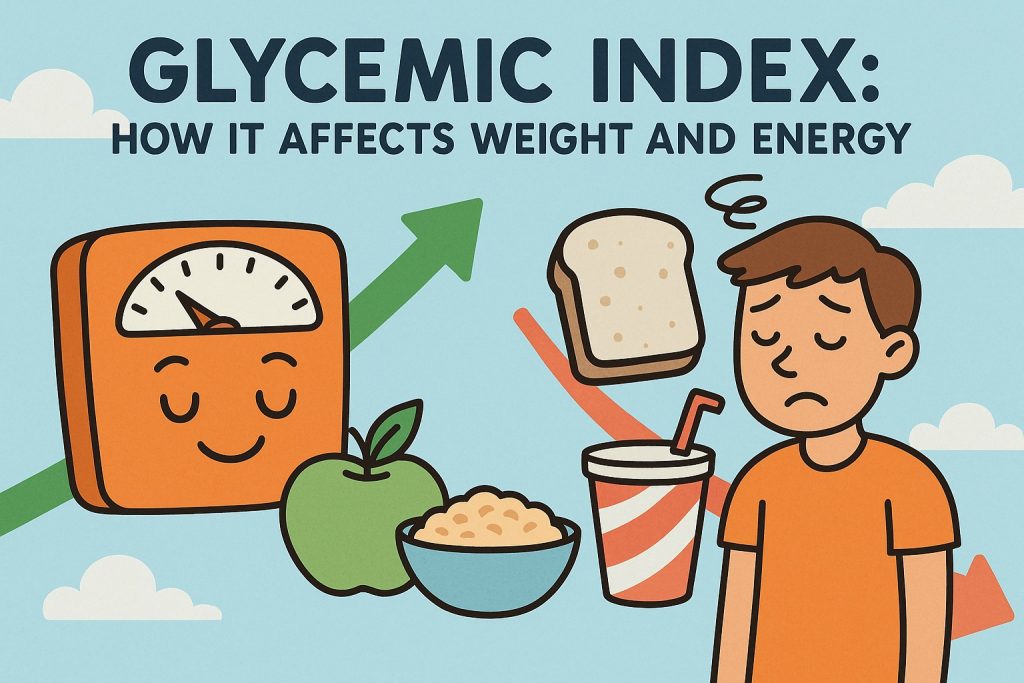The glycemic index (GI) is a valuable tool for understanding how different foods influence blood sugar levels, energy, and body weight. Developed to help manage diabetes, GI is now widely used by nutritionists, athletes, and individuals aiming for sustainable energy levels and healthy weight control.
What Is the Glycemic Index?
The glycemic index ranks carbohydrates on a scale from 0 to 100 based on how quickly they raise blood glucose levels after eating.
- High-GI foods (70 and above) cause rapid spikes in blood sugar.
- Medium-GI foods (56–69) result in moderate increases.
- Low-GI foods (55 and below) lead to gradual rises in blood sugar.
Foods with a high GI are typically refined or processed, while those with a low GI are often whole, fiber-rich, or minimally processed.
Impact on Energy Levels
When you consume high-GI foods, glucose enters your bloodstream quickly. This may give you a temporary energy boost, but it is often followed by a sudden crash, leaving you feeling tired, irritable, or hungry again.
In contrast, low-GI foods release glucose slowly, providing:
- Steady, long-lasting energy
- Improved concentration
- Fewer mood swings
This makes low-GI diets especially beneficial for people managing fatigue, ADHD, or unstable energy levels throughout the day.
Influence on Body Weight
High-GI diets are associated with:
- Increased hunger and overeating, due to sharp insulin spikes and rapid sugar drops
- Higher fat storage, particularly abdominal fat
- Risk of insulin resistance and type 2 diabetes
Low-GI foods, on the other hand, help:
- Control appetite by promoting satiety
- Regulate fat metabolism
- Support weight loss and maintenance
Several clinical studies have confirmed that low-GI diets can improve weight outcomes, particularly when combined with physical activity.
Examples of Glycemic Index Rankings
| Food | GI Rating |
|---|---|
| White bread | High (75) |
| Glucose (reference sugar) | High (100) |
| Brown rice | Medium (68) |
| Oatmeal | Low (55) |
| Lentils | Low (32) |
| Apple | Low (36) |
| Soda | High (65–70) |
Note: Ripeness, cooking methods, and food combinations can influence GI.
Practical Tips to Use the Glycemic Index
- Favor low-GI carbs like legumes, whole grains, and most fruits and vegetables.
- Combine foods: Adding protein, fiber, or fat to high-GI foods can lower their overall impact.
- Avoid ultra-processed carbs, sugary drinks, and refined snacks.
- Use GI as a guide, not a strict rule — the overall nutrient profile still matters.
Conclusion
The glycemic index offers a science-backed framework for choosing carbohydrates that support stable energy, appetite control, and healthy weight. While not the only factor to consider, it can play a key role in improving your diet and long-term well-being.
Glossary
- Glycemic index (GI) – a number that indicates how fast a food raises blood sugar.
- Blood glucose – the sugar found in your bloodstream, used for energy.
- Insulin – a hormone that helps cells absorb glucose from the blood.
- Insulin resistance – when cells no longer respond properly to insulin, raising the risk of diabetes.
- Satiety – the feeling of fullness that reduces the urge to eat more.


